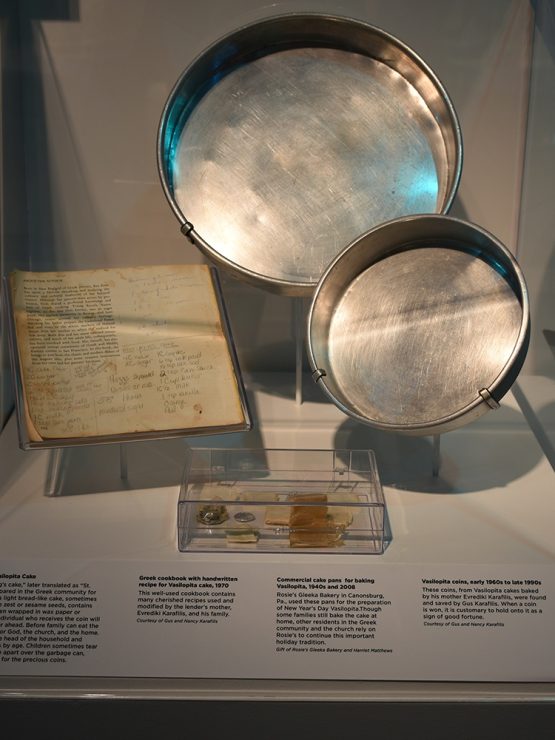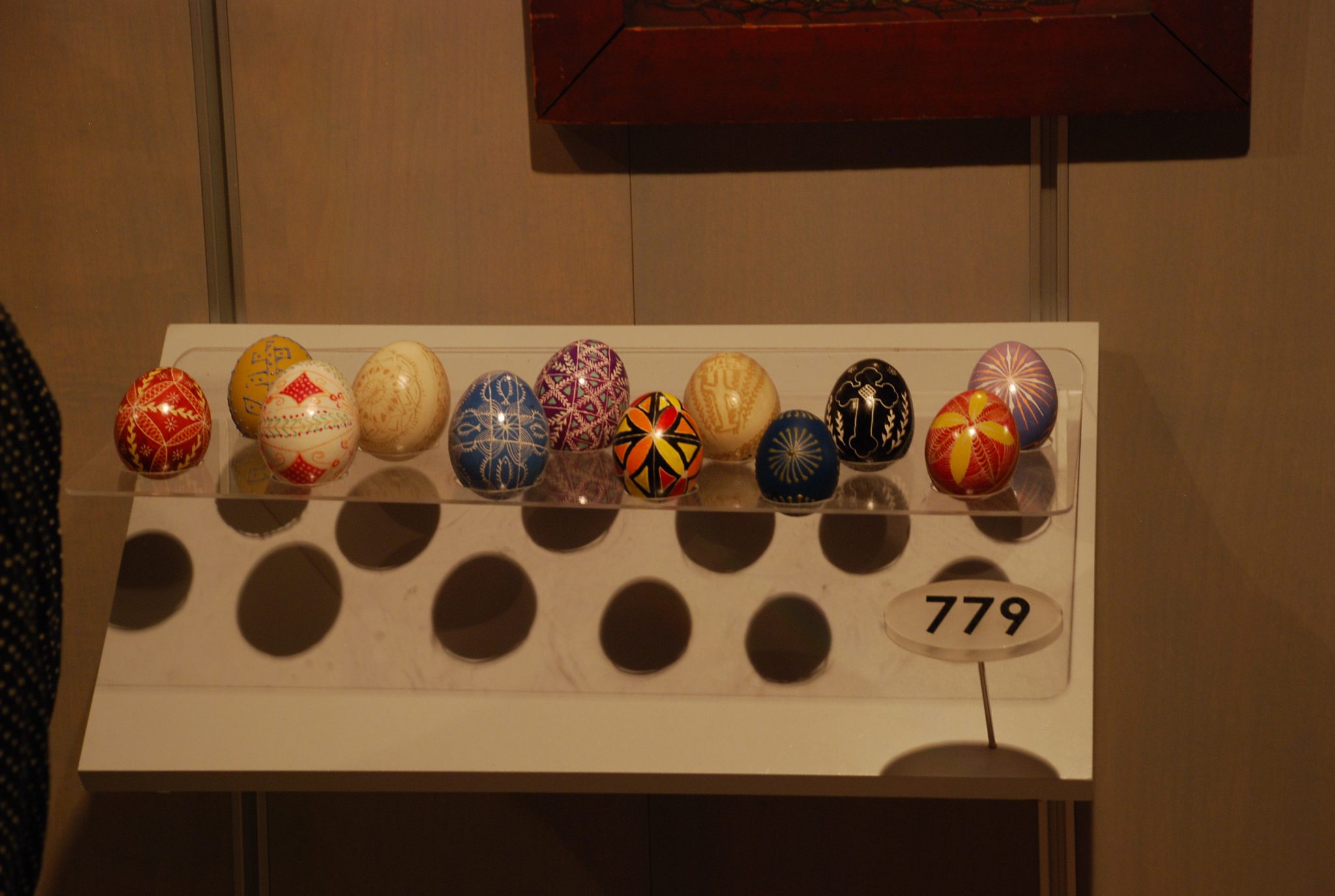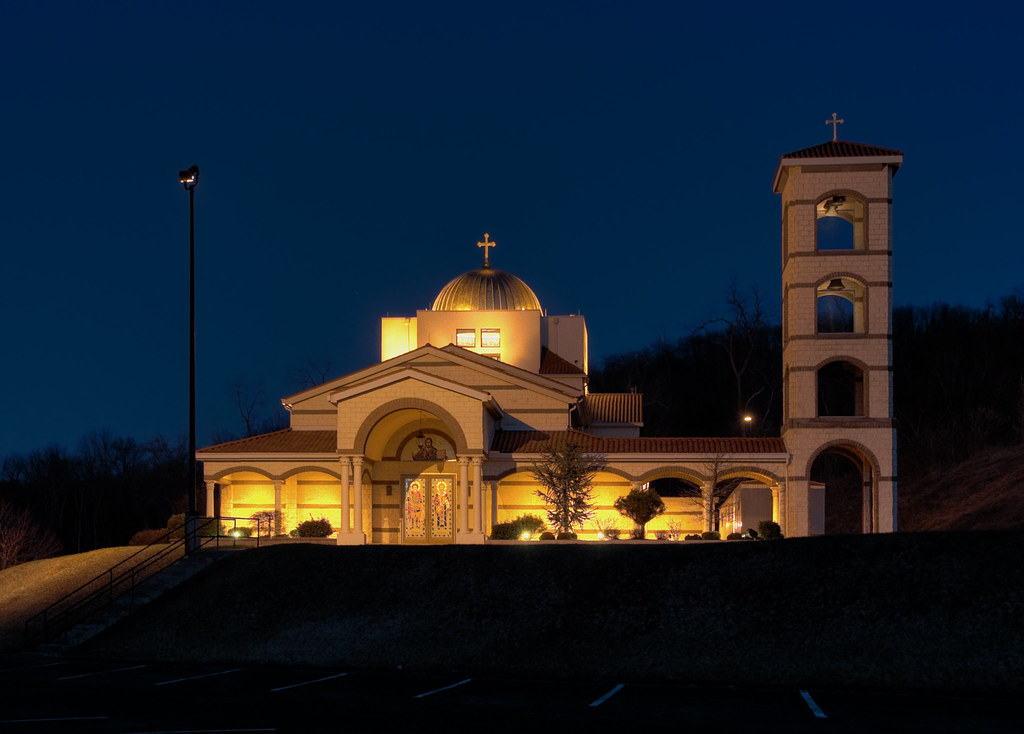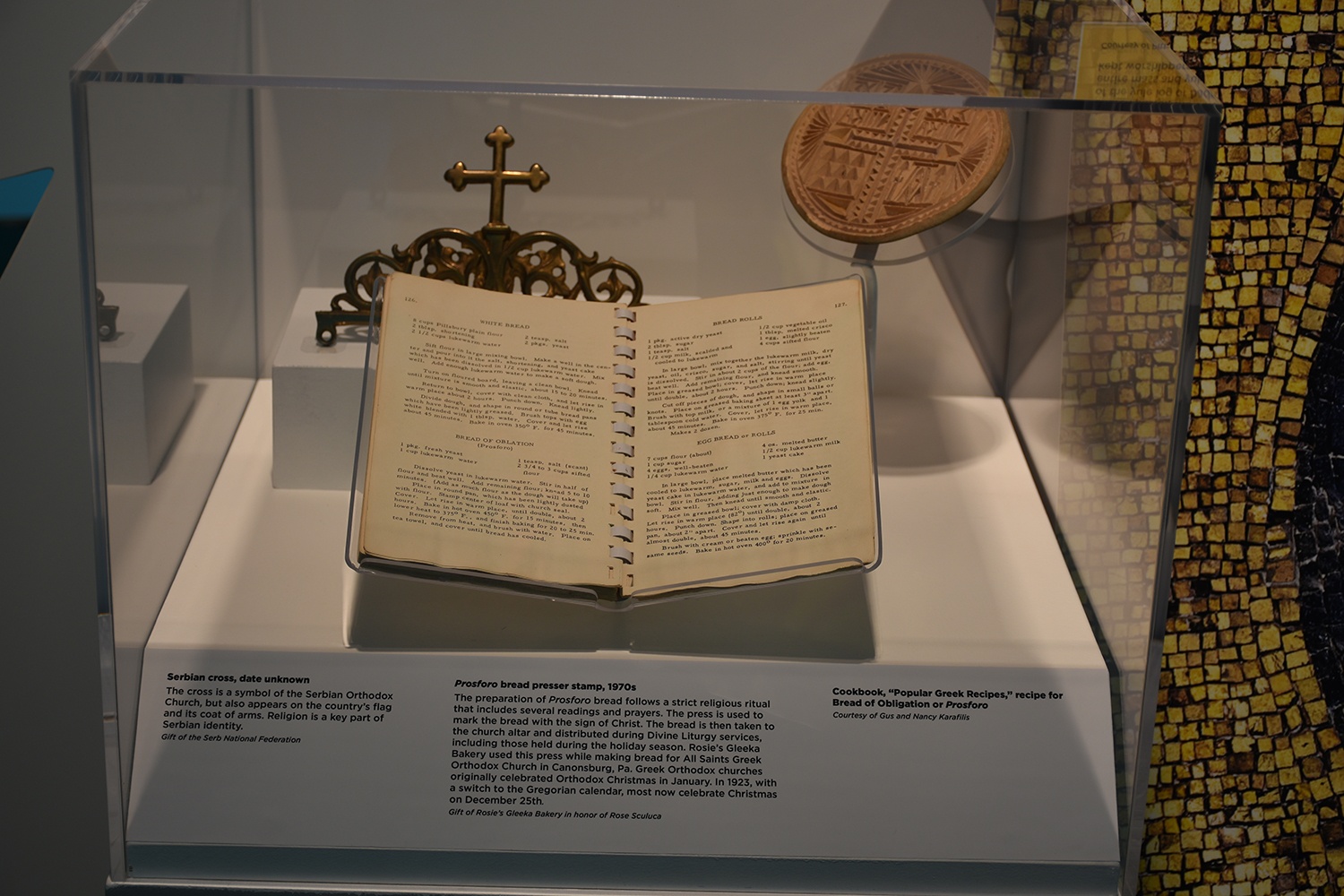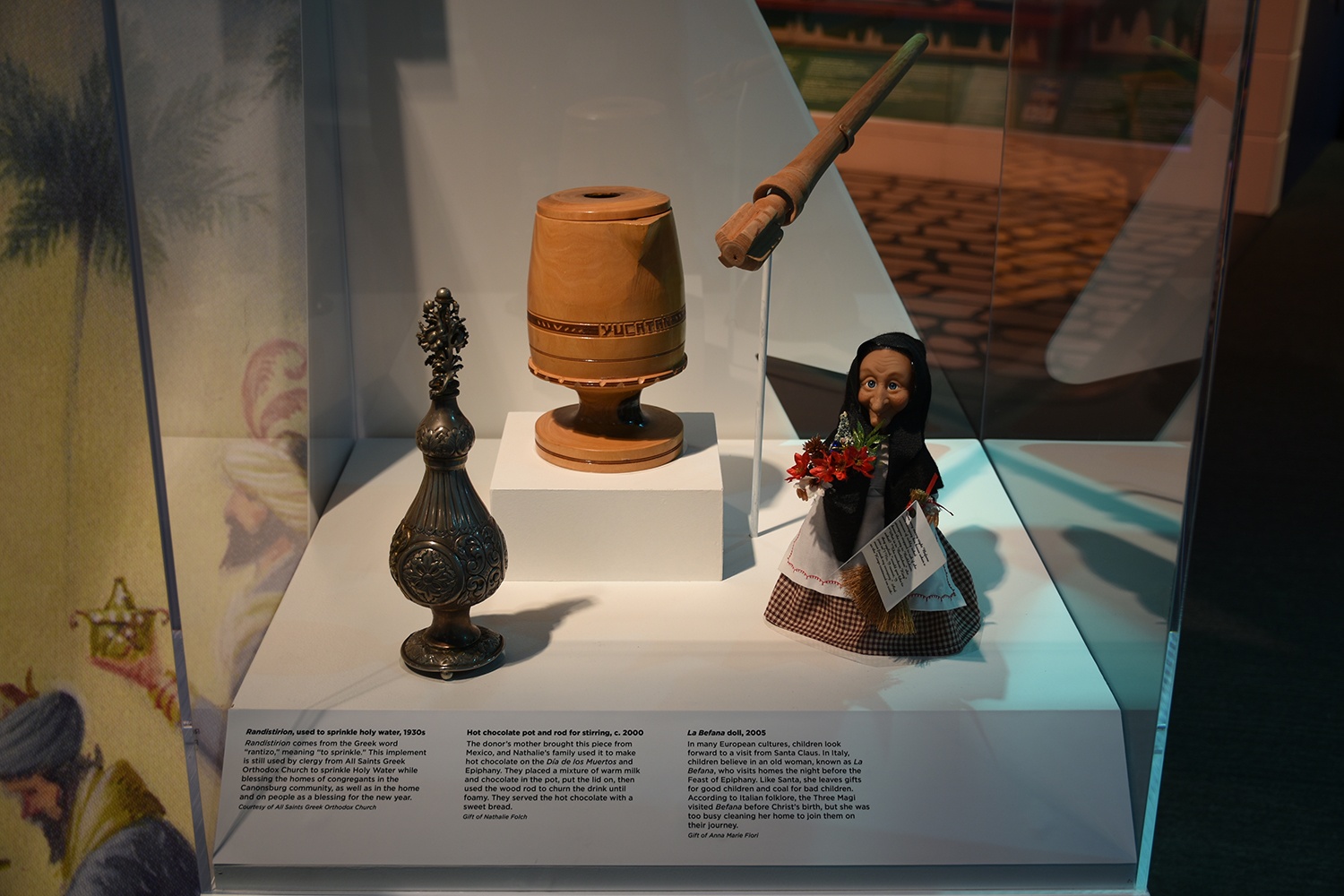This post recounts the experience of a History Center curatorial intern as he discovered the meaning of his own cultural heritage through his assistance with the A Very Merry Pittsburgh exhibition.
The Heinz History Center is one of my favorite things about living in Pittsburgh. This city and its surrounding region are full of unique experiences, iconographies, and, of course, infamous colloquialisms. However, I can learn only so much from direct experience alone. Since I was born in 1996 – the same year the History Center moved to its Strip District location – the History Center’s exploration of the past has helped others my age understand the deep emotional ties Western Pennsylvanians have to their region. However, one of my fondest memories of visiting the History Center in elementary school is also one of my most puzzling.
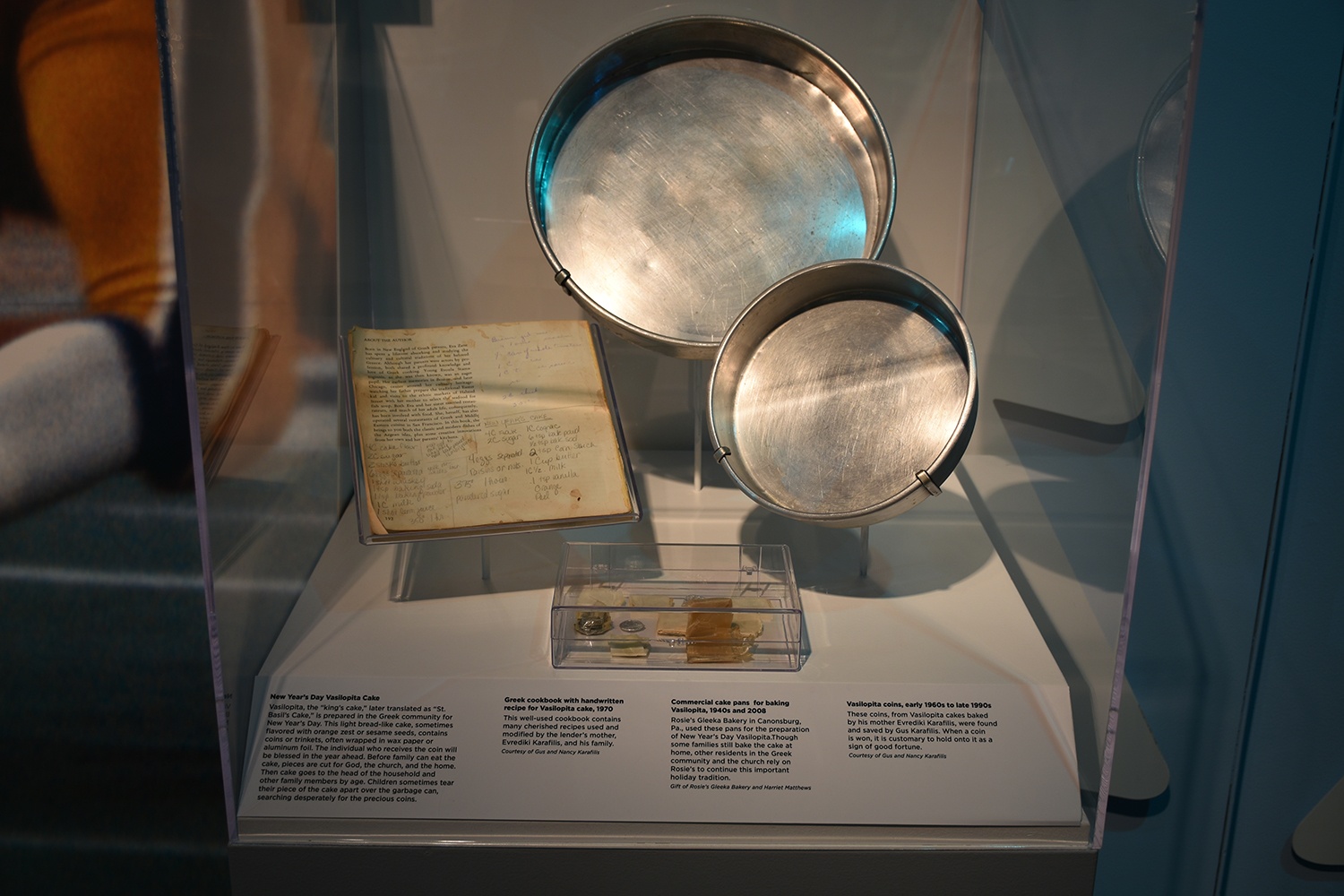
The Special Collections Gallery on the museum’s fourth floor contains ethnic collections representing a number of immigrant groups that show how their identities challenged, conflicted, and melded with the region. As a young boy, I was fascinated by these cultural depictions and the rich variety of artifacts on display. For example, the Carpatho Rusyn display features, among other cultural symbols, a selection of pysanky eggs used during the Easter holiday celebration. I remember looking at these and thinking how similar they were to the ones my family made for Pascha, the Easter holiday in the Greek Orthodox Church. Then, I paused and looked around. I asked myself, “Where are the Greek collections?”
In April 2019, I was accepted into the History Center’s internship program for this fall semester. One of the core points of discussion in my application materials was the need for an increased presence of artifacts representing Greek American cultural heritage in the Western Pennsylvania region. Alongside Senior Curator Leslie Przybylek, I identified several opportunities to introduce the first Greek American cultural artifacts into the museum’s exhibits. Leslie was incredibly open to the idea of expanding the museum’s cultural collections and telling Greek American stories in its galleries.
I was fortunate to grow up in a tightly knit Greek community in and around Canonsburg, Pa. I went to church at All Saints Greek Orthodox Church, learned to dance in the traditional Greek-style for food festivals, recited poems for Greek Independence Day at the Frick Museum, and enjoyed spanakopita, koulourakia, and yemisi during holiday family dinners. It was through our holiday celebrations that I found a connection between the History Center’s exhibits, Greek American artifacts in my church community, and those Russian pysanky eggs I first saw during an elementary school field trip.
For the A Very Merry Pittsburgh exhibit, on display until Jan. 5, 2020, I helped the curatorial staff secure loans and donations of several cultural artifacts related to Greek American holiday celebrations.
Harriet Matthews of Rosie’s Gleeka, a Greek bakery just down the road from my church in Canonsburg, donated two round baking pans she used to make Vasilopita, a New Year’s Day cake with a coin symbolizing good luck hidden inside. Additionally, she shared a wooden stamp used to mark Prosforo bread distributed during Divine Liturgy services with the Sign of Christ.
My church’s clergy, Father George Livanos and Deacon George Athanasiou, loaned a “randistirion” from the 1930s. This piece is used to bless houses, businesses, and people with Holy Water during the season of the Epiphany in celebration of Christ’s baptism on Jan. 6.
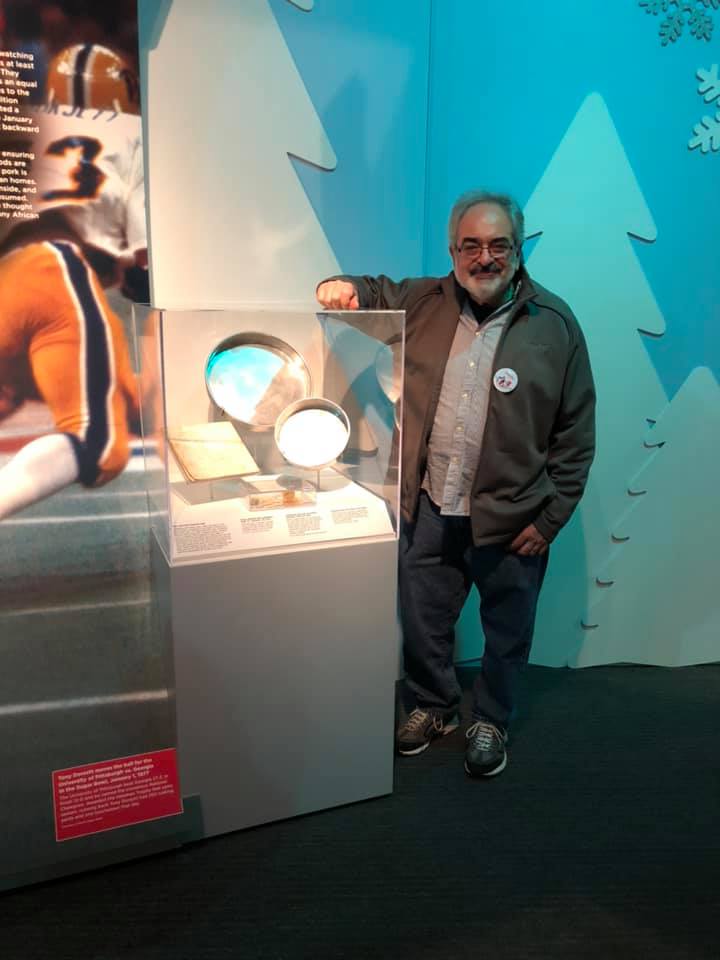
Finally, my family celebrated the life of my paternal grandmother, Evrediki Karafilis, by loaning her mortar and pestle along with a set of Vasilopita coins. She used the mortar and pestle to crush various spices and other ingredients for the aforementioned yemisi rice dish. The 10 Vasilopita coins were collected and saved by my father from four decades of New Year’s Vasilopita cakes baked by his mother. At the exhibit’s opening this year, my dad was teary-eyed upon seeing his late mother’s cookware on display. It was the first time he ever realized that his family’s personal relics are worthy of institutional display and scholarly study.
It is my hope that every community that calls Western Pennsylvania its home understands that its stories are meaningful, fascinating, and rich in tradition. I certainly felt that way as a young boy wondering where the Greeks belonged in the halls of history. Seeing the impact that even a few artifacts on display can have for an ethnic group’s validation and acceptance confirmed that we all have stories related to our familial and ethnic histories to tell. As a result of this work, it is my sincere hope that the History Center continues to strengthen its role as a center for the exhibition and study of all the ethnic identities, including Greek Americans, that have fervent ties to Western Pennsylvania.
Nick Karafilis was a curatorial intern with the History Center’s museum team in the fall of 2019.
